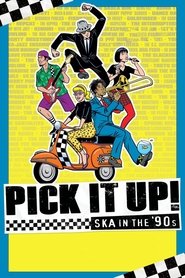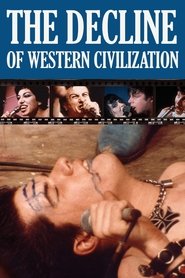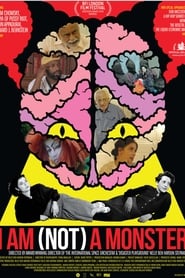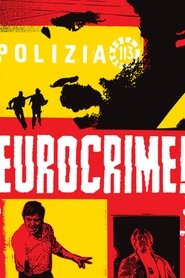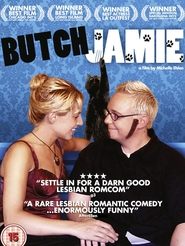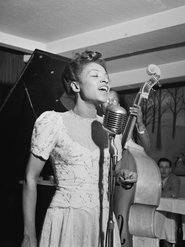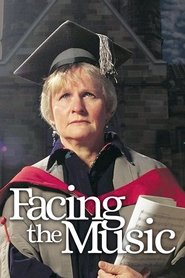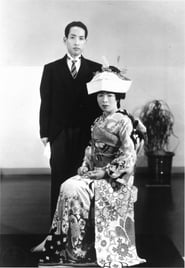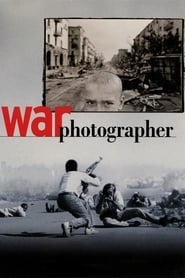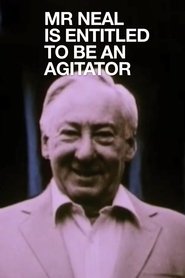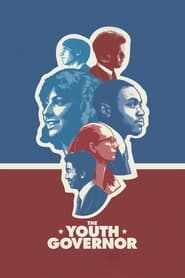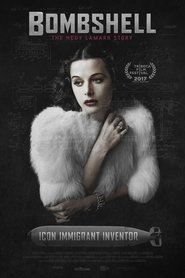Popular Documentary Movies on Kanopy - Page 146
-
Pick It Up!: Ska in the '90s
2019
star 8Pick It Up! is an independent documentary film about the rise in popularity of ska music in the 1990s and the subsequent return to the underground. The film features members of Reel Big Fish, The Mighty Mighty Bosstones, No Doubt, Sublime, Save Ferris, Goldfinger, The Specials, Less Than Jake, Hepcat and many more. -
The Decline of Western Civilization
1981
star 7.1The Los Angeles punk music scene circa 1980 is the focus of this film. With Alice Bag Band, Black Flag, Catholic Discipline, Circle Jerks, Fear, Germs, and X. -
Sometime, Somewhere
2024
Sometime, Somewhere
2024
Sometime, Somewhere sheds light on the challenges faced by Latino communities in Charlottesville, Virginia against the backdrop of immigration driven by factors like climate change, poverty, and drug-related violence. -
I Am (Not) a Monster
2019
-
Queen of the Sun: What Are the Bees Telling Us?
2010
Bees have existed in the world for 150 million years. They are essential helpers for the growth of plants and crops that serve as food for other animals. During their development, people realized the importance of bees and have been involved in beekeeping since ancient times. Recently, however, bees have begun to die excessively for no apparent reason. The film addresses the dramatically deteriorating health of bee colonies and the unforeseeable consequences that bee mortality can have for our very existence. It seeks answers to the questions of what bees actually want to tell us and what significance bees have in the broader context of sustainability of life on Earth. To prevent such a catastrophe, our approach to beekeeping must be fundamentally changed. In this regard, the film offers many stimuli and inspiring examples from around the world. -
Los que buscamos
2019
Los que buscamos
2019
star 7Enrique was separated from his mother at birth, Ascension was forced to give up her daughter after giving birth. Both are victims of the "stolen babies" plot, a slippery ground for Spanish justice. While they continue with the legal battle, they continue with their searches, living with guilt, rejection and the construction of their own identity. -
Eurocrime! The Italian Cop and Gangster Films That Ruled the '70s
2012
star 7.7A documentary concerning the violent Italian 'poliziotteschi' cinematic movement of the 1970s which, at first glance, seem to be rip-offs of American crime films like DIRTY HARRY or THE GODFATHER, but which really address Italian issues like the Sicilian Mafia and red terrorism. Perhaps even more interesting than the films themselves were the rushed methods of production (stars performing their own stunts, stealing shots, no live sound) and the bleed-over between real-life crime and movie crime. -
The First Movie
2009
The First Movie
2009
star 7.3Filmmaker Mark Cousins, who was brought up in a Northern Irish war zone, travels to Goptapa, a Kurdish-Iraqi village of just seven hundred people on a tributary of the Tigris river, and tries to make a dream film about a place that is normally only portrayed in current affairs programmes. He gives the kids cameras, and they make their own little movies about war, love, a fish that goes to a magical place, and a chicken who debates justice. -
Butch Jamie
2008
Butch Jamie
2008
star 3.4The film follows the story of Jamie, a struggling butch lesbian actress who gets cast as a man in a film. The main plot is a romantic comedy between Jamie's male alter-ego, "Male Jamie," and Jill, a heterosexual woman on set. The film's subplots include Jamie's bisexual roommate Lola and her cat actor Howard, Lola's abrasive butch German girlfriend Andi, and Jamie's gay Asian friend David. -
Released
2013
Released
2013
In “Released,” drawn from an Off Broadway play, four New Yorkers recount their criminal pasts and their struggles to stay out of jail. -
Maxine Sullivan: Love to Be in Love
1990
A lyrical film portrait of the once famous, and now, largely forgotten jazz vocalist Maxine Sullivan. -
United in Anger: A History of ACT UP
2012
star 6.9United in Anger: A History of ACT UP is an inspiring documentary about the birth and life of the AIDS activist movement from the perspective of the people in the trenches fighting the epidemic. Utilizing oral histories of members of ACT UP, as well as rare archival footage, the film depicts the efforts of ACT UP as it battles corporate greed, social indifference, and government negligence. -
Facing the Music
2001
Facing the Music
2001
star 6.8Anne Boyd, one of Australia's leading contemporary composers, teaches music at the publicly funded University of Sydney. This documentary chronicles a year in the life of an academic department that's under the financial gun. -
The Good Wife of Tokyo
1993
star 6Kazuko Hohki goes back to Tokyo with her band, the ‘Frank Chickens’, after living in England for 15 years. This wry and delightful film records her re-experiencing of Japan after a long absence, examining traditional attitudes to women and those of Kazuko’s friends who are trying to live differently. -
War Photographer
2001
War Photographer
2001
star 7.6Documentary about war photographer James Nachtwey, considered by many the greatest war photographer ever. -
Mr Neal Is Entitled to Be an Agitator
1991
In the last four years of his life, Lionel Murphy was at the centre of an historic battle to retain his position on the High Court in Australia. While the film concentrates on this period and the events leading up to it, in a wider sense, it uses the dramatic story of Murphy as a vehicle to consider some more fundamental issues about law. The film tackles the problem of police and security surveillance of the individual in Australian society and in particular, of prominent political and legal figures. -
The Youth Governor
2022
The Youth Governor
2022
4,000 teenagers of a YMCA run a mock government complete with elections, legislators, lobbyists, and political party bosses. -
Dim Sum (A Little Bit of Heart)
2002
Documentarist Jane Wong films her mother and two Chinese friends as they discuss their lives and experiences as émigrés living in Liverpool. -
Bombshell: The Hedy Lamarr Story
2018
star 6.9The life and career of the hailed Hollywood movie star and underappreciated genius inventor, Hedy Lamarr. -
Performing the Border
1999
A video essay set in the Mexican-U.S. border town of Ciudad Juarez, where U.S. multinational corporations assemble electronic and digital equipment just across from El Paso, Texas. This imaginative, experimental work investigates the growing feminization of the global economy and its impact on Mexican women living and working in the area. Looking at the border as both a discursive and material space, the video explores the sexualization of the border region through labor division, prostitution, the expression of female desires in the entertainment industry, and sexual violence in the public sphere.
 Netflix
Netflix
 Amazon Prime Video
Amazon Prime Video
 Apple iTunes
Apple iTunes
 Apple TV Plus
Apple TV Plus
 Disney Plus
Disney Plus
 Google Play Movies
Google Play Movies
 Paramount Plus
Paramount Plus
 Hulu
Hulu
 HBO Max
HBO Max
 YouTube
YouTube
 fuboTV
fuboTV
 Peacock
Peacock
 Peacock Premium
Peacock Premium
 Amazon Video
Amazon Video
 The Roku Channel
The Roku Channel
 AMC+
AMC+
 Kocowa
Kocowa
 Hoopla
Hoopla
 The CW
The CW
 Vudu
Vudu
 Starz
Starz
 Showtime
Showtime
 PBS
PBS
 Pantaflix
Pantaflix
 FXNow
FXNow
 Tubi TV
Tubi TV
 Kanopy
Kanopy
 Comedy Central
Comedy Central
 Crunchyroll
Crunchyroll
 Microsoft Store
Microsoft Store
 Redbox
Redbox
 Sun Nxt
Sun Nxt
 ABC
ABC
 DIRECTV
DIRECTV
 Crackle
Crackle
 Fandor
Fandor
 Plex
Plex
